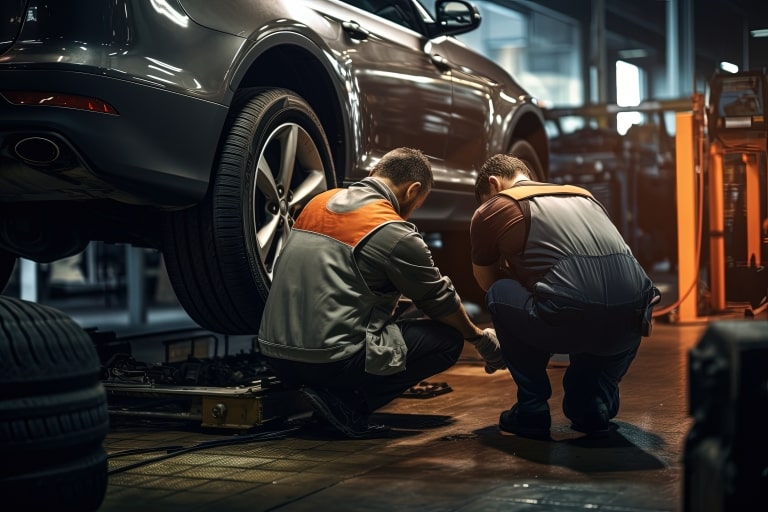Owning a car entails a significant responsibility: maintaining its optimal condition for safety and reliability. Regular maintenance is more than just a routine; it’s a proactive approach to extend the lifespan of your vehicle and significantly reduce the risk of accidents. Diligent upkeep ensures that every drive is safe, reliable, and free from preventable mechanical failures.
This guide provides a comprehensive checklist for car maintenance, helping you keep your vehicle in top condition and minimizing the risk of accidents on the road.
Understanding The Importance Of Regular Maintenance
The first step in keeping your car accident-ready is adhering to a regular maintenance schedule. This involves routine checks and services as recommended by your vehicle’s manufacturer. Neglecting these can lead to unexpected breakdowns or malfunctions that could result in accidents.
In case of an accident due to mechanical failure, consulting a Salt Lake City car accident lawyer or wherever you may be located can offer insights into legal options and responsibilities.
Car Maintenance Checklist To Remember
Maintaining a vehicle is critical for ensuring its longevity and safety. Regular care and upkeep involve several key areas that, if properly managed, can significantly reduce the risk of accidents and breakdowns. Key areas of focus include:
- Oil Changes: One of the most fundamental aspects of car maintenance is regular oil changes. Engine oil serves as a lubricant, reducing friction and wear on engine components. Over time, oil breaks down and becomes less effective, which can lead to increased engine wear and potential damage. Typically, it’s recommended to change oil every 3,000 to 5,000 miles, although this can vary based on the vehicle’s make, model, and the type of oil used. Synthetic oils, for instance, often allow for longer intervals between changes. Regular oil changes prolong the life of your engine and maintain its efficiency and performance.
- Air Filter Replacement: The air filter is crucial for protecting the engine from airborne contaminants like dust, dirt, and debris. A clogged air filter can reduce engine performance and efficiency, leading to higher fuel consumption and reduced power. Replacing the air filter every 12,000 miles or as specified in your vehicle’s manual helps maintain optimal engine function.
- Brake Pads and Rotors: The braking system is vital for vehicle safety. Worn brake pads and damaged rotors can significantly increase stopping distances, potentially leading to accidents. Regular checks for wear and timely replacements are essential. The frequency of these checks depends on driving habits and conditions.
- Brake Fluid: Brake fluid is hygroscopic, which means it absorbs moisture over time, which can lead to reduced braking efficiency and even failure. Ensuring the brake fluid is at the correct level and replacing it every two years is essential for maintaining the braking system’s reliability and performance.
- Tire Maintenance: Tires are the only point of contact between the vehicle and the road, making their maintenance crucial. Incorrect tire pressure can lead to poor handling, increased wear, and the risk of blowouts. Monthly checks and adjustments, especially before long trips, are recommended. Similarly, tire tread depth is critical for traction, particularly in wet conditions. Tires should be replaced when the tread depth falls below 2/32 of an inch.
- Lights and Signals: Properly functioning lights and signals are essential for visibility and communication with other road users. Regular checks of headlights, brake lights, turn signals, and emergency flashers are necessary for safe driving.
- Windshield and Wipers: A clear windshield is vital for visibility. Any cracks or chips should be addressed promptly to prevent them from enlarging or affecting visibility. Wiper blades, crucial during rain or snow, should be replaced every six to twelve months.
- Battery: The battery is the heart of your vehicle’s electrical system. A dead battery can leave you stranded without warning. Regular testing every six months and replacement every three to five years, depending on usage and climate, are key to avoiding unexpected failures.
- Cooling System: The cooling system keeps the engine at the right temperature. Regular checks of coolant levels and system flushes as recommended in your car’s manual are important to prevent overheating, which can cause significant engine damage.
- Emergency Kit: Finally, always keep an emergency kit in your car. This kit should include essentials like a first aid kit, flashlight, jumper cables, basic tools, water, and non-perishable snacks. Being prepared for unexpected situations is an often overlooked but critical aspect of vehicle maintenance.
Regular maintenance of these key areas extends the life of your car and ensures its safety and reliability. It’s a proactive approach to vehicle care that can save time, money, and lives.

Conclusion
Regular car maintenance is essential for safe driving and preventing accidents. By following this checklist, you can ensure your vehicle remains reliable and accident ready.
Remember, if you ever find yourself in an accident, especially one resulting from a mechanical failure, seeking advice from a lawyer can be an invaluable step towards understanding your legal rights and options.
